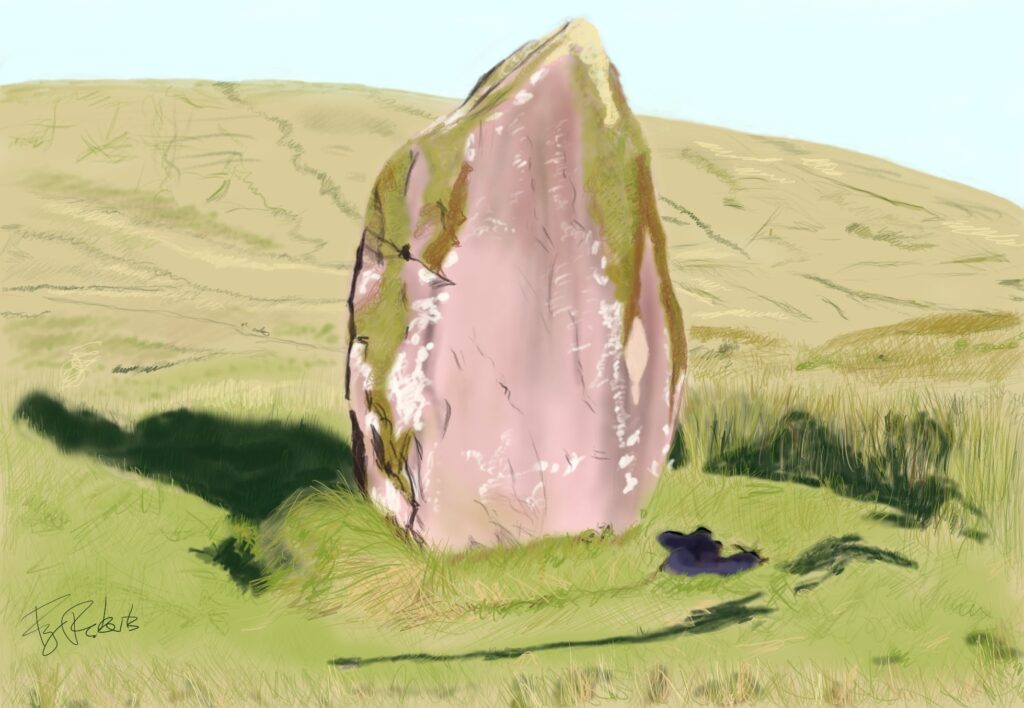I’ve found myself resigned to the fact that it’s quite difficult to describe the kind of poetry I do. At first I rhymed all the time, because I was writing songs, then songs without tunes. Then I refused to rhyme, then internal rhyme and assonance became something of a standard, and my work is primarily written for performance, but not always. Because it turns out that I also like haiku/ senryū, and I’ve lately taken to enjoying strict forms more, including being (gladly, but also somewhat nervously) roped into the yearly 28SonnetsLater challenge, which, in 2023, for some reason ended up being villanelles instead. And I’ve been writing poetry to commission (at festival stalls, for weddings, as a way to communicate with the neighbours) for over ten years now.



So, instead of trying to describe something where I’m as likely to jam in thirteen layers of obscure (and sometimes multilingual) pun as just rant about my ex, I thought I’d show you some examples so you can decide for yourself…
Sentinel

Not easy, this one, but I’m glad I persevered! I was particularly taken with how the paths and scars on the hill are echoed on the menhir at this angle. (Source image from Wikipedia: Photograph by Immanuel Giel.)
The sky shifts over the
skirling hills,
the wilful wind sinks,
and my shadow
slips to drink.
You have discovered me
again, and my vows are
renewed –
memories echo in me
as you carry me home.
I am the beckoning,
tectonic,
pinning spirits
to now, from then
to ever.
Not for me the gorsedd –
eisteddwch,
tawelwch yn canu;
listen and remember
under the bell of sunset.
I hide, unmoving shape-shifter,
one note in
the song of ever,
sipping from the sky
until you come again.
Sentinel is about the standing stone in the Brecon Beacons (a national park of rolling hills in South Wales) called Maen Llia. It’s said that the stone sometimes goes wandering down to the nearby river to drink at sunset… This piece was originally a commission for an elderly Welsh gentleman who came by our Poetry To Go stall at RHS Wisley’s Arts Festival and wanted a poem for this feature, describing in achingly evocative detail how the stone appears as if from nowhere when you walk the Beacons. The piece appears in the Nature/ The Sea section of Spectral. And yes, I drew that picture myself.
Nightsong
It’s the silence that binds you;
deep in the arid darkness,
sleep slipping through hot fingertips,
you reach for a lullaby
that swerves your grip.
You eddy in songless spirals,
throat dry with wishes
you dare not even whisper;
you touch each surface
as you pass but stay untouched
in turn, black-gloved,
summoning nothing.
And it’s the silence, finally,
that speaks, crackles into static,
snags your sleeve in passing;
the empty space,
the jagged edges of white noise,
the radio slipping stubbornly from its station.
And so you slip yourself
from the pacing round,
ground yourself in a
different kind of movement,
finding yourself on the other side
of the locked door for once.
It’s been a long day,
finally awake at this strange time,
you take yourself to open air,
dare any direction in darkness,
trusting the road beneath numbly
until you stumble among the reaching roots,
the air cooler, moss-scented,
and between the trees,
the river gathers glitters
to its singing self.
Listen.
It sings of the long-ago hills,
the springs that birthed it,
the streams that twined together,
weaving separate histories
into something bigger.
It sings of the green things,
the roots nurtured,
even as they gave it structure,
held its banks in gentle,
strengthening grips.
It sings of the caress of rain,
new water gifting grace;
it sings of the sun lifting mist,
giving moisture back,
the dance of particles in refreshing air.
It sings of the places that cupped and shaped it,
being shaped in turn;
luxuriating through flatlands,
hurrying down slopes,
resting in pools before moving on.
And it sings of the sea,
that great gathering to come,
wide and wild, salted and loud,
resounding the new song
it longs to chorus in.
There’s no rush, the water tells you,
and despair is a dam,
stifling and dividing you
from the dance you set your step to
the moment you sprang forth.
Wade in, it whispers, plant your feet,
heave the detritus you’ve weaved
into separate pieces,
set them free to join the flow
that takes us to the sea.
And, as the sky reflects the pledge
of the coming sun,
the first bird chuckles, sleepy,
warming toward the tune of a new day,
echoed by the river.
Your limbs are heavy,
aching from the weight of the
dismantled dam, but as you
head home, you can feel the hum
in your own chest,
the promise of a song
you’ll sing again.
Nightsong was a commission in May 2020 by a hospital chaplain, who wanted a non-religious piece to read to patients and families who were approaching the most inevitable change of all. It took me a long while to write, I don’t mind admitting. The bold line is to indicate where to start reading the more hopeful bit aloud.
(And you can commission me to write poetry for you/ a loved one/ someone you need to impart difficult news to in verse form.)

